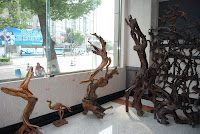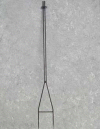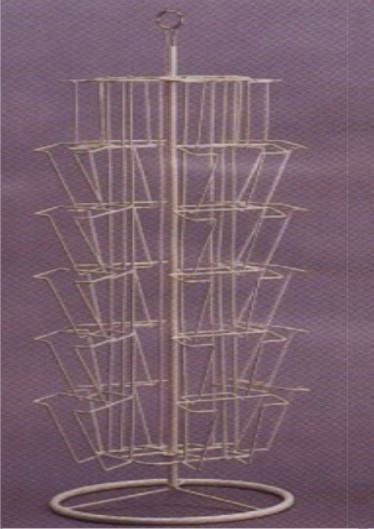












The development of root carving art has undergone a long history in China। The earliest root carving works existent, are “pixie(guarding against evil spirits)” and horn shaped utensil in the Warring States Period, which were successively found in ancient tombs in Hubei Province during 1980s. That shows clear that root carving craft has reached to a certain art level, formed a unique art category, and treasured by people at that time. In books of Southern Qi Dynasty, there were records about the story in which Emperor Gaozhu gave a hermit, named Seng Shao, a “ruyi” (a ‘S” shaped ornamental object) made of bamboo root as a gift. At the same time, some utilities, furnishings and furniture made of roots came into being.
In the poem To Hermit Mu by Hanyu(A।D. 768-824), Tang Dynasty, there was description about a piece of root carving article in the shape of a human. During the dynasties of Song and Yuan, root carving got its development both in the imperial court and among the civilians, and some painters created works based on root carving articles, too. In the picture, “100 Hundred Musicians Playing ‘Chin’ (an ancient stringed musical instrument)”, many furnishings were root carving works. In Ming Dynasty, the artistic style root carving works became much more distinctive. In Qing Dynasty, a large number of craftsmen engaged in root carving welled up, the creation of root carving developed to a new stage. They, carrying forward the tradition of root carving, created many fine root carving articles. Up to now, there remain many collections of works in Qing Dynasty in the Imperial Palace, Summer Palace in Beijing and Yu garden in Shanghai.
Characteristics of root carving art:Through the whole process of creation, the natural beauty should be retained ingeniously। When selecting a piece of root with naturally beautiful shape and value of creation, some, at the first sight, can be given a fixed theme, but such a case is hard to encounter. Most of them might just leave artisans an impression for their fine configuration, and it seems that they may be used in creation, but it is not clear, on earth, to what should be done to them. As for a piece of complicated root with many branches and twigs, an artisan elaborates the theme, and proceeds on the stage of making. When making, the principle – what an artisan trims should not surpass 30% of the whole the root; the natural shape should be retained no less than 70% -- must be implemented, the artisan is expected to retain or cut any part in a rational and careful manner, in accordance with the requirement of the main idea. In addition to a little embellishment and carving which have to be done, the stress should be put on how to artfully utilize natural pattern of the root, like branch, fiber, hole, knot, scar, texture, color and luster, posture, etc., and those natural features and poise should be exploited in a sound way and fine expression in the fixed artistic image. Under the guidance of this creation ideology, an artisan should, adopting different techniques in line with different material, apply a series of indigenous processes to preserve and dispose, to carve and polish, etc. In this way, he, cleverly making use of the natural beauty, integrates naturally the wonderful natural beauty with the ingenuity of human beings’ creation, thus carry out the initial visualization for creation.
Since root carving art ought to make indigenous use of the natural beauty, and leave no visible sign of undergoing artistic treatment, the works seem to be an artistic व्होले
Categories of root carving art Works of practicality and appreciation integrate both practical and appreciative value, while focusing on the former, and paying certain attention to the latter. The common ones are chairs, beds, tables and stools made of roots as well as “tiaoji” (a narrow rectangular table), sofa, tea table, folding screen, flower shelf and other furniture in common use. There are also articles made of roots used on desk like penholder, ruler-shaped paperweight, ink-stone base, etc. root carving works displayed for appreciation, mainly for displaying and viewing and admiring, are the principle part among all root carving works, accounting for the majority. In terms of modeling feature, root carving works can be divided into the following genres: works in the shape of human, animal, bird and poultry, fish and insect, flower and herb, utensil, and aesthetic works as well as those in shapes of other natural configuration.












.jpg)
















6 comments:
its good to know about it? where did you get that information?
Damu pa kmu to?.. Nano ni klase blog man?
I agree with you about these. Well someday Ill create a blog to compete you! lolz.
I could give my own opinion with your topic that is not boring for me.
top [url=http://www.c-online-casino.co.uk/]c-online-casino.co.uk[/url] hinder the latest [url=http://www.casinolasvegass.com/]casino[/url] unshackled no deposit hand-out at the best [url=http://www.baywatchcasino.com/]www.baywatchcasino.com
[/url].
I almost never drop comments, but i did some searching and wound up here
"root carving". And I actually do have some questions
for you if you usually do not mind. Could it be just me or does it appear like a few
of the comments appear like left by brain dead people?
:-P And, if you are posting at other online social sites, I would like to
follow anything new you have to post. Would you
list of every one of your social sites like your twitter feed, Facebook page or
linkedin profile?
My web site ... online gambling usa
Post a Comment